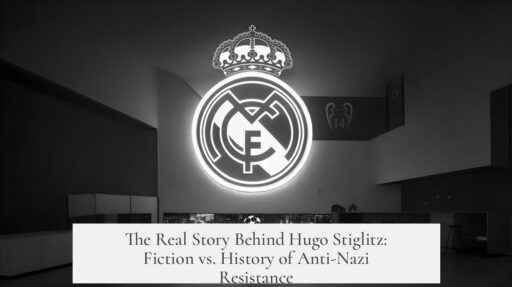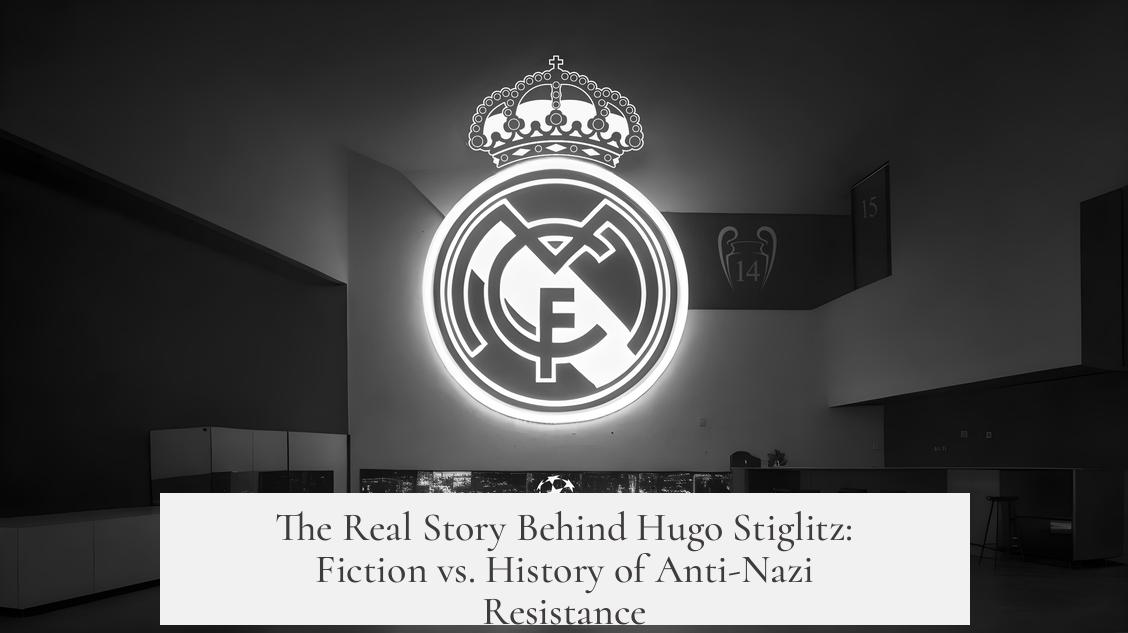Hugo Stiglitz in Inglorious Basterds (2009) is a fictional character and does not have a direct historical counterpart who was a German soldier killing Gestapo officers from within. The character, portrayed as a Wehrmacht officer turned Nazi hunter, is a creation of Quentin Tarantino and does not reflect any known real-life individual with a similar background or actions during World War II.
The name “Hugo Stiglitz” is actually an homage by Tarantino to a Mexican actor, Hugo Stiglitz López, known for roles in 1970s and 1980s horror films. This naming was a tribute rather than an attempt to recreate or reference a historical figure.
There is speculation that Tarantino’s character partly draws inspiration from Max Otto von Stierlitz, a fictional Soviet spy featured in Yulian Semyonov’s novel Seventeen Moments of Spring (1969) and its television adaptations. Stierlitz infiltrates Nazi security organizations during WWII, acting as a secret agent. Unlike Stiglitz’s violent approach, Stierlitz is more a spy and detective working underground.
Stierlitz remains a culturally iconic figure in Russia and former USSR states, known more for intelligence and infiltration than direct combat. Any link between Stiglitz and Stierlitz is unconfirmed and largely hinges on the similarity of their names and their shared opposition to Nazis.
Historically, there were German resistance groups and individuals opposed to the Nazi regime, such as the Antifaschistisches Komitee Freies Deutschland (Antifascist Committee Free Germany), but these operated mostly through organized efforts and espionage rather than lone soldiers assassinating Gestapo officers as Stiglitz does in the film.
- No historical record exists of a Wehrmacht officer killing multiple Gestapo agents as depicted by Hugo Stiglitz.
- The character’s name honors Mexican actor Hugo Stiglitz López.
- Possible loose inspiration comes from fictional Soviet spy Max Otto von Stierlitz.
- Real German resistance against Nazis was mainly collective and covert, not vigilante-style killings.
Was There a Real Hugo Stiglitz Who Took Out Gestapo Officers? The Truth Behind the Inglorious Basterds Character

In Quentin Tarantino’s 2009 movie Inglourious Basterds, Hugo Stiglitz is a German soldier with a legendary reputation: he killed thirteen Gestapo officers. But was there a real-life counterpart to this character? Spoiler alert—there wasn’t.
Now that we have that out of the way, let’s dig into the story behind Hugo Stiglitz and his intriguing origins, as well as if history offers anything even in the same ballpark. Sit tight.
The Legend of Hugo Stiglitz: A Fictional Creation with Real Flair
First off, there’s no recorded or documented historical figure resembling Hugo Stiglitz who was a Wehrmacht soldier turned Gestapo-killer on his own solo crusade. Searching through archives and war records reveals no imprisoned German officer who decided to play vigilante and start knocking off Gestapo agents, one-by-one.
So where did Tarantino get the name and the idea of such a badass character?
A Name that Rocks: Tribute to an Underground Mexican Actor

Turns out, “Hugo Stiglitz” is a clever homage. The character is named after Hugo Stiglitz López, a Mexican actor known in cult circles for starring in horror and exploitation films during the 1970s and 80s. Think zombies, voodoo, and a dash of low-budget gore. Tarantino, a cinephile who loves blending pop culture and film history, borrowed the name to honor this genre actor’s niche fame.
So, while our fictional soldier is busy fighting Nazis, his namesake was busy fighting movie monsters and bad scripts. Quite a contrast!
Did Tarantino Borrow from the Soviet Spy Drama?
There is some chatter about the character’s inspiration potentially having a Soviet twist. Enter Max Otto von Stierlitz, the fictional Soviet spy known as the “Soviet James Bond.”
Stierlitz appears in Seventeen Moments of Spring, a 1969 novel and its influential TV adaptation. The story follows Colonel Maksim Isaev (aka Stierlitz) as he infiltrates top Nazi security agencies to sabotage weapons programs and spy on German high command. Although he mainly uses brains and subterfuge rather than guns blazing, Stierlitz hunts Nazis undercover. A thematic cousin to Stiglitz?
This connection remains speculative because the link is mostly based on the similarity of the names and shared anti-Nazi roles. Tarantino has not confirmed this, so it remains a fun theory rather than historical fact.
Stierlitz vs. Stiglitz: Two Very Different Anti-Nazi Figures

Unlike the action-packed and violent Hugo Stiglitz, Stierlitz emerges largely as a cool-headed detective figure; he’s more about espionage and psychological warfare. His dead-pan narration in the Soviet adaptation even became famous for jokes in Russian culture.
Interestingly, Stierlitz remains a popular cultural icon in Russia and former Soviet states, with dedicated fans, statues, and even Vladimir Putin reportedly appreciating the character. Quite the legacy for a Soviet-era spy!
Real History: Did Any German Officers Rebel Against the Nazis?
While individual rogue soldiers shooting Gestapo agents alone? That’s absent from documented history.
However, there were real-world German opposition movements and organized resistance groups during WWII. For example, the Antifaschistisches Komitee Freies Deutschland (Antifascist Committee Free Germany) represented Germans actively working against the Nazi regime, often at great personal risk. These were not lone wolves but collective efforts with political motivations.
Even within the Wehrmacht, there were officers and soldiers involved in plots like the famous July 20, 1944 assassination attempt on Hitler. But these acts differed from Stiglitz’s personal vendetta and killing spree.
Why Did Tarantino Create Such a Character?

Tarantino loves mixing history and invention. His films often rewrite events or insert fictional characters with outsized impact to explore “what if” scenarios or amplify themes like rebellion and revenge.
Hugo Stiglitz fits perfectly into this mold: a gritty anti-hero within a stylized alternate history where one man single-handedly takes down Gestapo officers. It’s cinematic justice rather than factual biography.
What Can We Learn from Hugo Stiglitz’s Story?
- Film vs. History: Movies like Inglorious Basterds show compelling tales of defiance but blend fiction and history freely.
- Cultural References Matter: Names like Hugo Stiglitz pay tribute to lesser-known figures, showing the blending of global pop culture influences.
- Resistance Comes in Many Forms: While lone soldiers killing Nazis wasn’t a historical norm, organized resistance did exist.
- Question Everything: It’s fun and educational to investigate how and why filmmakers create particular characters.
In Conclusion
Hugo Stiglitz, the German soldier in Inglourious Basterds who killed thirteen Gestapo officers, is a fictional character without a direct historical counterpart. His name honors a Mexican cult actor. The character possibly takes hints from the Soviet spy Stierlitz but mainly serves Tarantino’s creative vision of a bold anti-Nazi hero.
The story reminds us how cinema can mix history, myth, and pop culture to create legends that are catchy and thought-provoking, if not entirely true. So next time you watch those gritty scenes of Stiglitz in action, remember: it’s art—thrilling, but a little make-believe.
Have you come across other badass characters whose history is murky or mashed up with fiction? Let’s swap stories in the comments!
Was Hugo Stiglitz in Inglorious Basterds based on a real person?
No, Hugo Stiglitz is a fictional character. There is no historical record of a German soldier who killed thirteen Gestapo officers as he did in the movie.
Why does the character share the name Hugo Stiglitz?
Tarantino named the character after Hugo Stiglitz López, a Mexican actor known for horror films in the 70s and 80s. This was a homage rather than a reference to a real soldier.
Is there a connection between Hugo Stiglitz and Max Otto von Stierlitz?
There is speculation that Tarantino’s character was partly inspired by Max Otto von Stierlitz, a fictional Soviet spy who infiltrated Nazi Germany. However, this connection is unconfirmed and based mainly on the similarity of names.
Were there real German soldiers who turned against the Nazis during WWII?
Yes, but such actions were rare and usually part of organized resistance groups like the Antifaschistisches Komitee Freies Deutschland. Solo missions killing Gestapo officers are not documented historically.
Why is the character of Max Otto von Stierlitz significant?
Stierlitz is a popular Soviet spy character from novels and TV shows. He is seen as a clever infiltrator, not a typical action hero. His story was well-known in the Eastern Bloc and remains popular today.




